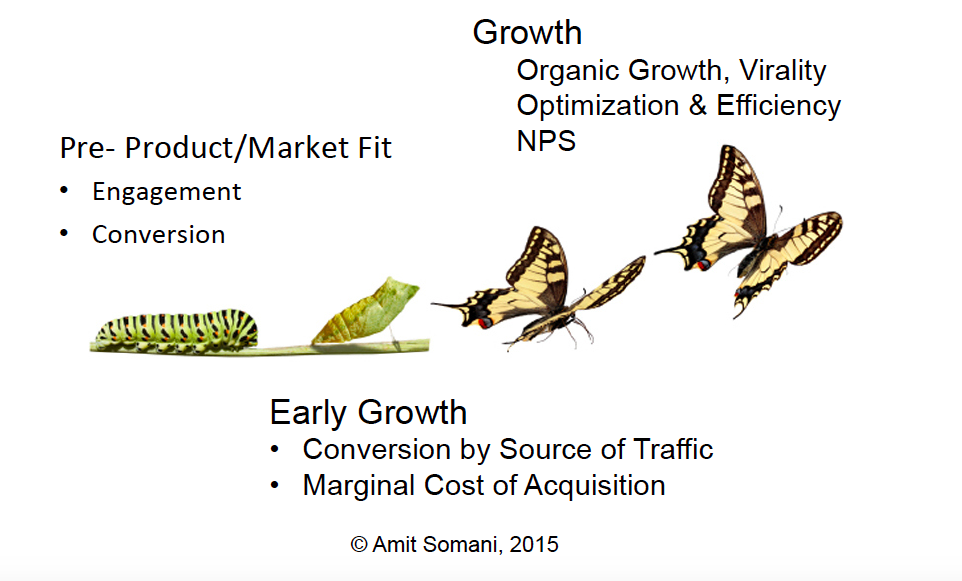As a venture capitalist, one of my favorite questions to start a pitch or a business review is:
What are 1-3 metrics that move the needle for your business (also, called the North Star Metric or the "One Metric that Matters")?
The prototypical answer one often gets is revenue, GMV (Gross Merchandise Value), or the number of transactions, DAUs (Daily Active Users), MAUs (Monthly Active Users), or such. Unfortunately, these are not good candidates for being your North Star metrics. Wait a second! Celebrated CEOs such as Eric Schmidt have said, “Revenue hides all evil”.

Respresentative Image
Isn’t business eventually just about the P&L? Yes and No. Eventually, the purpose of every business is to serve customers in a profitable manner. However, one needs to chart a viable path to get there.
Every aspect of your business is spewing out a ton of data. Hats off to you for measuring everything. Much like the naked eye can see up to 6,000 stars in the sky, you may have also beautifully visualised all that data using the latest analytical tools. However, how do you figure out if you are on track? Well, there are 58 stars that have been given special status in the field of celestial navigation. One amongst these, Polaris, or the North Star, is special.
Polaris sits almost directly above the North Pole, and therefore, it is a reliable gauge of the North pole.
A North Star metric captures the fundamental value created by your business. It is the core unit that fundamentally shows the direction you need to pursue your business. Depending on the stage and complexity of the business, one may need 2-3 metrics to capture the business health.
Two simple litmus tests for this set of metrics are as follows:
- Ability to predict the health of the business ahead of time
- Change your behaviour
Different stages of growth in a startup
A lot of these metrics depend both on your business and also the stage of your business. In this famous 2012 essay, Paul Graham wrote about the 3 key stages of growth.
- Initial period while the startup tries to figure out what it's doing: Relevant metrics are primarily around engagement, conversion, and evaluating if you are really solving a problem that matters to the customer.
- Early growth phase on how to reach lots of people: At this stage, the distribution metrics become key - organic growth, identification, and effectiveness of the channel, etc. are relevant.
- Sustained growth to large companies: Now, the efficiency of the operation, margins, virality, net promoter score, etc. become more critical.

Image Credit: Amit Somani
Let us put this to test with a few illustrative cases.
1. A B2B Vertical SaaS (software) company that serves clients across the world
As is typical, this company uses monthly recurring revenue and the number of clients signed as a North Star Metric. Let’s assume this company missed its monthly revenue and transaction target by 10 percent.
A few questions come to mind:
- How bad is the miss?
- How early should we have figured this out?
- What should the company do to fix it?
We know something is wrong but don't have a sense of the magnitude of the problem nor might it be a timely indicator. One metric that we like at Prime Ventures is the Quick Ratio, which is a measure of the overall growth of the business factoring in churn. By all means, this may not be the only metric that matters but you need to figure out what is the core driver for your business.
2. B2C Marketplace providing on-demand beauty services to consumers.
Every marketplace has consumers and suppliers. Let's assume this marketplace is not supply-constrained but is demand challenged; that is, there are plenty of beauticians available but getting ongoing, hopefully loyal customer demand is the driver for growth.
Revenue may seem tempting as the core metric but again is not a good metric. The core value in a marketplace is the liquidity in the marketplace and the health of either the demand or supply, whichever is constrained.
For this illustration, one may look at the Customer Acquisition Cost, Conversion %, and Net Promoter Score as core NSMs. As soon as these metrics swoop, revenue will be affected in subsequent quarters.
3. An online, content-driven, freemium edtech platform that offers vocational learning programmes.
Let us assume this marketplace has lots of content. We may be tempted to use DAUs, MAUs, or even revenue as metrics. However, the metrics that matter here might be completion rate of courses, the conversion from free to premium, and possibly repeat visitation.
Summary
Focusing on high-level metrics or reporting dozens of metrics is not going to get the job done.
It is no longer what gets measured that gets done; it is what gets paid 'attention' to that gets done.
So go ahead, dig in, and look at the core value that your business creates and find a suitable metric or two that captures that value. Please reflect upon and share your startups and the north star metrics; I will respond to as many comments as I can.
I am confident this exercise will guide you to help your startup identify its Polaris.
[This post was first published on LinkedIn]
Edited by Megha Reddy
Link : https://yourstory.com/2021/06/how-to-identify-your-north-star-metrics
Author :- Amit Somani ( )
June 13, 2021 at 05:40AM
YourStory

